Invincibility centre Bakhmut. What is happening at the most difficult axis of the front
"The main Invincibility centre of the country", "fortress city" and "city of heroes". This is how the defenders of Bakhmut have been described for the last few weeks, with videos posted depicting trenches reminiscent of the First World War. Once a city of 70,000 people, which is now being attacked by the Russians over a wide front.
The occupiers focused their attention on Bakhmut in the middle of July, after capturing Sievierodonetsk and Lysychansk. Since then, more and more Ukrainian military, anti-tank hedgehogs, as well as huge craters from Russian airstrikes have appeared in the city. Western analysts and Ukrainian officials say: Russia is trying to encircle the city.
Is everything really so critical? Ukrainska Pravda has been closely monitoring the situation on the Bakhmut front since the beginning of June. During the last trip to the combat zone, Ukrainska Pravda had the opportunity to talk with the military, who keep the borders of this front to the north, east and south of Bakhmut, and also see with our own eyes the situation in the city and neighbouring Soledar.
Below is the situation on the Bakhmut front through the eyes of Ukrainska Pravda with comments from the Ukrainian military. What is happening on the Bakhmut front In early August, the commander of one of the battalions of the Special Operations Forces told Ukrainska Pravda that the Russians are not actually going to attack Bakhmut head-on: they plan to bypass the city and take it in an operational encirclement.
The northern border for such a manoeuvre was to be Soledar, the southern - the villages of Zaitseve and Opytne.
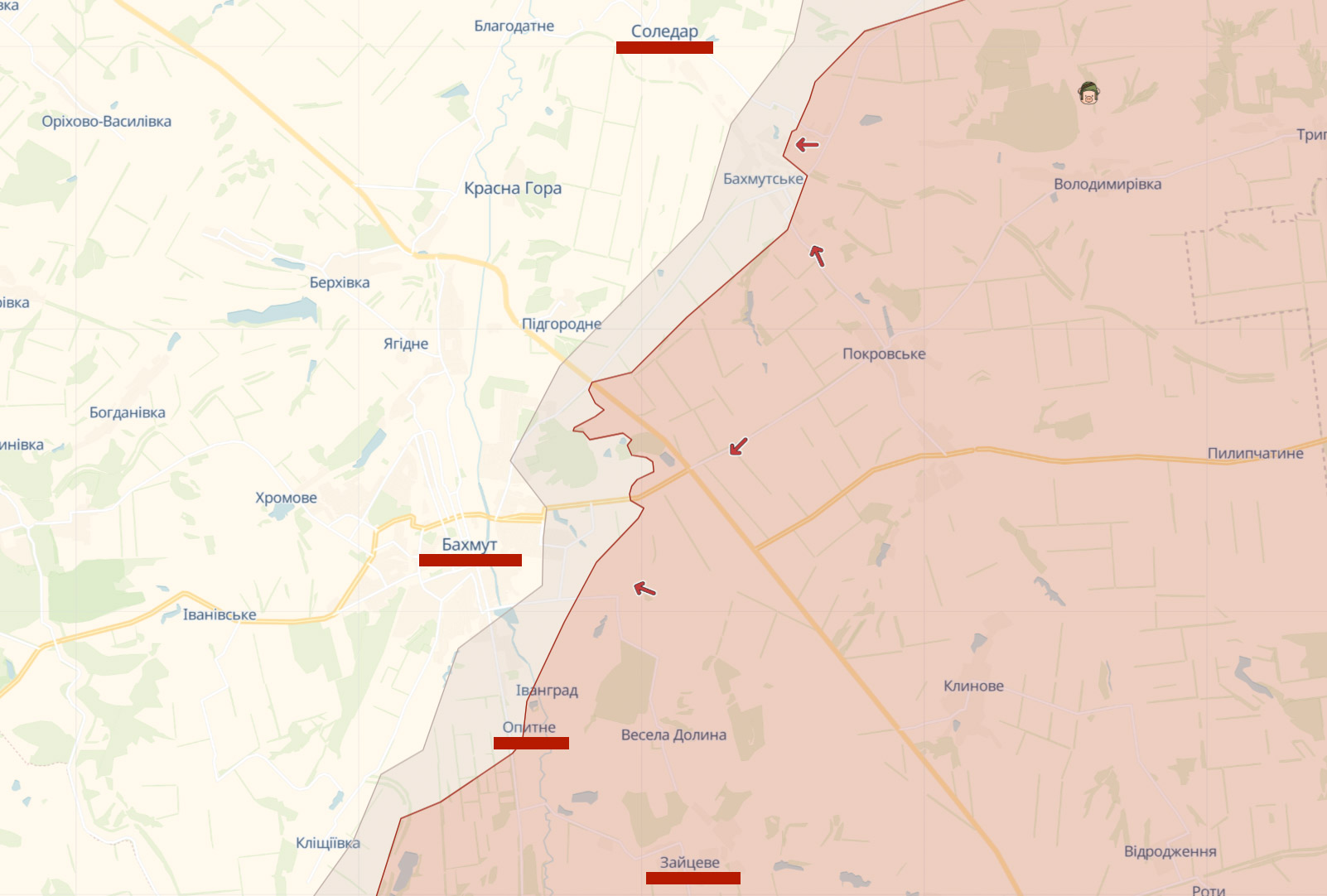
As of the beginning of December, this plan has not changed significantly. The Russians are trying to storm Soledar, advancing on the villages south of Bakhmut, and also push on the eastern border of the city from the side of the occupied territories. That is, the Russians are attacking Bakhmut from three directions at once.
And on some of them, unfortunately, they have tactical success. Let's dwell on this in more detail.
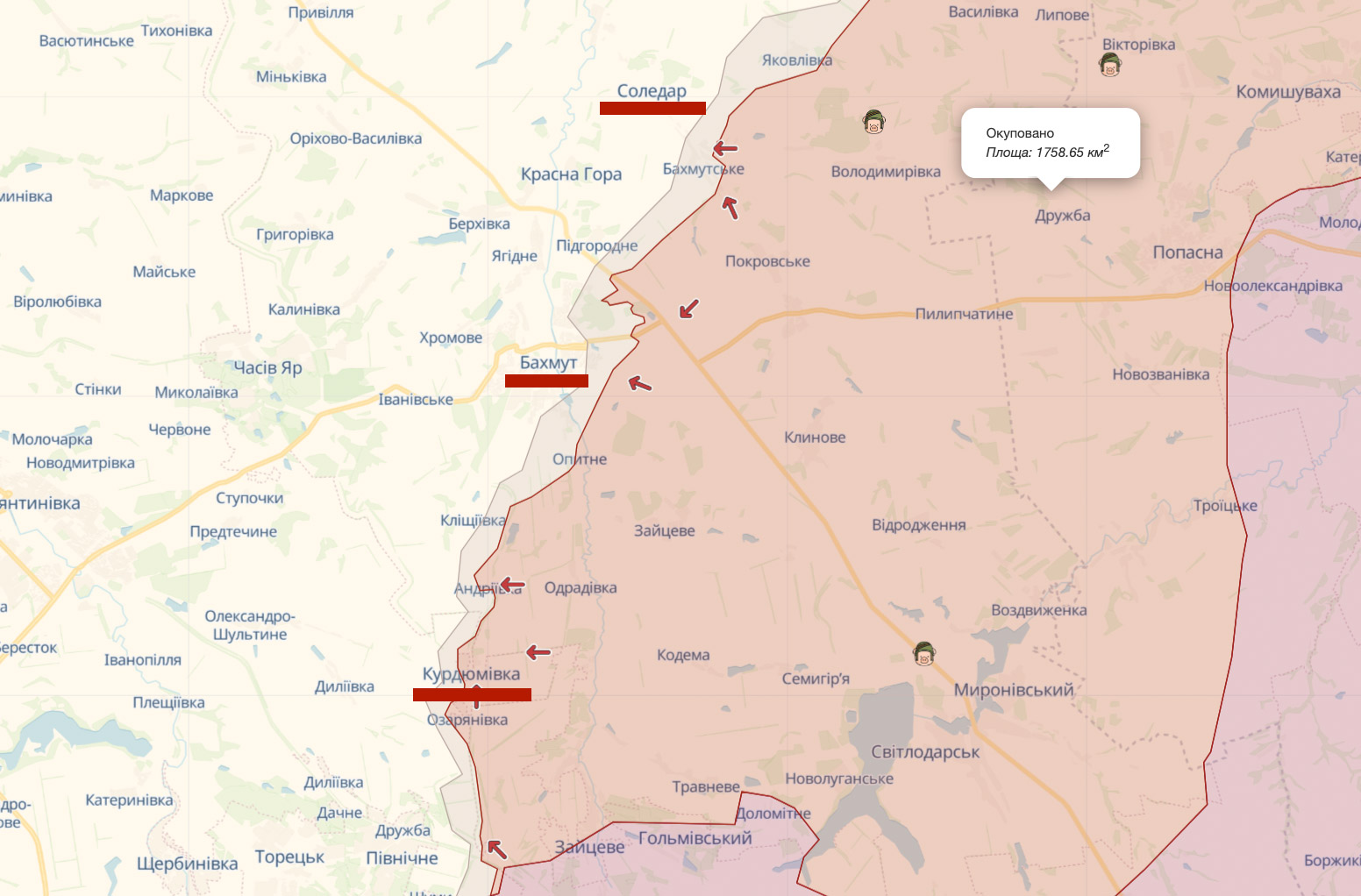
The northern border of the Bakhmut front is Soledar. Soledar is known for the largest salt production company in Europe, Artemsil. Despite regular assault attempts, this city currently looks like the most impregnable target for the Russians on this front.
First, it is a territory with numerous fortifications. Secondly, it is high up. Thirdly, Soledar is held by quite strong brigades, in particular the legendary 93rd Brigade Kholodnyi Yar.
Since the summer, the Russians have practically failed to advance through Soledar. Ukrainska Pravda's sources in the military defending the city say that the occupiers are stationed on the eastern edge of Soledar: at the KNAUF building materials factory, which they occupied in the summer. And they also periodically go to the easternmost street of the city.
"Even if they do achieve success, it is minimal, tactical. Strategically, we have the advantage. "They came in a little bit in places - we pushed them back, they came in, we pushed them back, and so on all the time," one of the servicemen of the 93rd Brigade told Ukrainska Pravda. The Russian army regularly and rather chaotically fire on Soledar.
Even aircraft are not being spared: while working in the city in early December, a journalist of Ukrainska Pravda witnessed two Russian helicopters launching missiles at Soledar. If you look at Soledar not only as a battlefield, but also as a city that once was home to 10,000 people, there are almost no houses with whole windows left in it. Many high-rise buildings are covered with holes from direct hits of artillery shells, some of the premises: the administrative building of Artemsil, kindergartens - were completely burned.
Despite the extreme risks to life, several hundred civilians remain in the city.
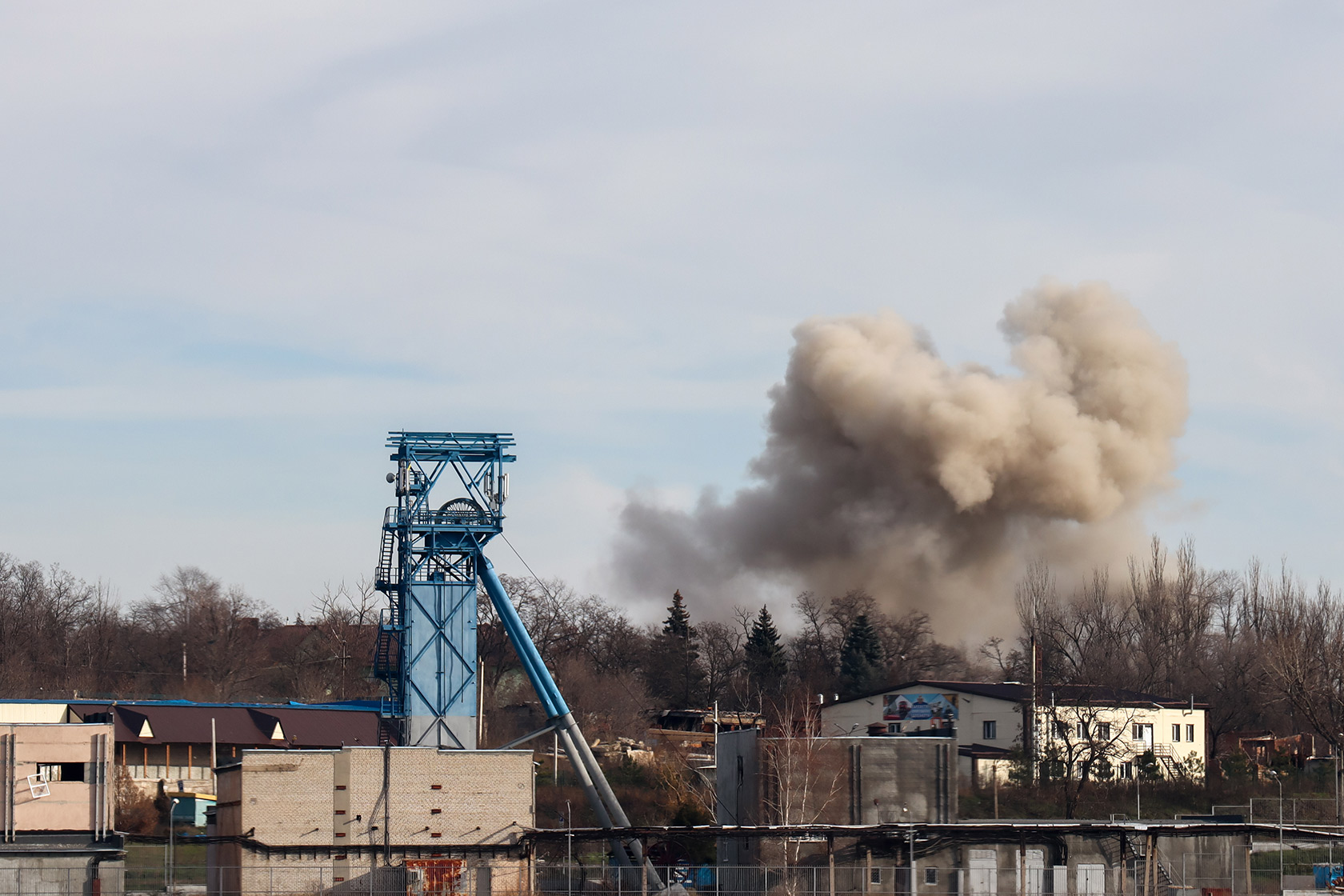 A cloud of dust rises after the chaotic Russian shelling of Soledar
A cloud of dust rises after the chaotic Russian shelling of Soledar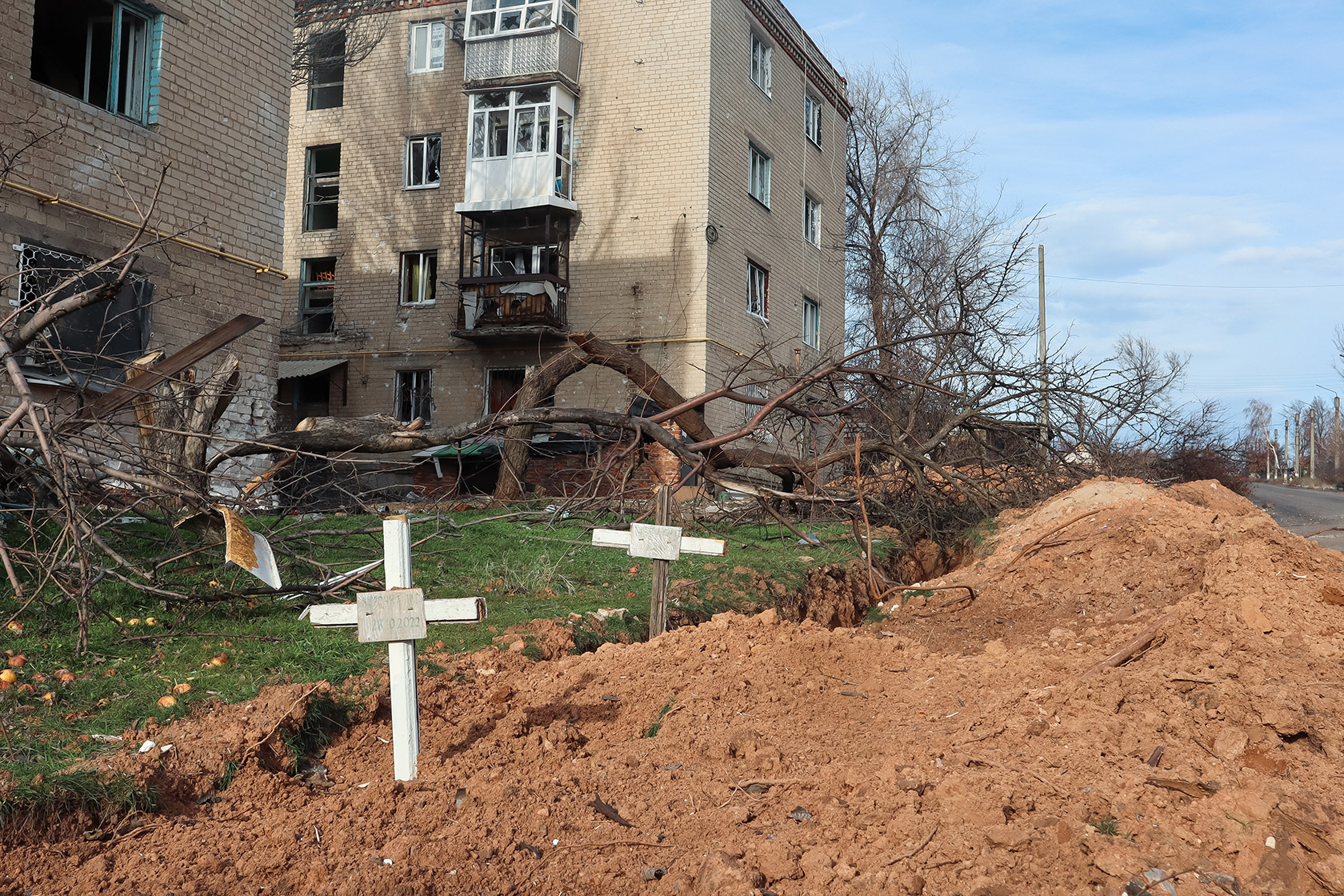 Two graves of civilians in Soledar, buried right in a trench
Two graves of civilians in Soledar, buried right in a trench
The eastern border of Bakhmut is a district of the city called Zabakhmutka. This is part of the area where the Russians are closest to Bakhmut itself and for which there are fierce battles. DeepState analysts [monitoring group, which created the map of hostilities in Ukraine - ed.] have even marked the whole of Zabakhmutka as a "grey zone" on their maps for some time, but currently only some of the area is marked as such. The point is that the Ukrainian forces managed to push the Russians a little further away from the city.
All of the Ukrainian troops on the Bakhmut front, with whom Ukrainska Pravda has spoken for this story, said that the Armed Forces of Ukraine are currently in full control of Bakhmut. The area of Zabakhmutka is somewhat separated from the main part of the city, as it is located across the Bakhmutka river. The Russian invaders destroyed the main bridge across the river on 22 September. This has created many logistics issues for both the Ukrainian military and civilians who remain in Zabakhmutka.
The southern border of the Bakhmut front is approximately around the villages of Kudriumivka-Maiorsk. The Russian troops are currently having the greatest success in this area of the front. They have managed to capture Kodema, Mykolaivka Druha, Odradivka, Zaitseve and other settlements since the beginning of September. The military who spoke to Ukrainska Pravda journalists said that the village of Opytne, located just outside Bakhmut, is partially under Ukrainian control.
The toughest hostilities are currently taking place for Kurdiumivka, which is the highest point, Zelenopillia and Andriivka. Russian forces are not working here pointwise, but are pressing along the entire flank. "However, the canal [Siverskyi Donets-Donbas - ed.] behind Kudriumivka and above will become their obstacle - and there is no goddamn chance they will cross it.
So even if we lose a few more villages - It's okay. But we are fighting for every bush," Petro Kuzyk, the commander of the Svoboda battalion of the National Guard, whose guys are currently defending south of Bakhmut, tells UP with a noticeable fatigue in his voice.
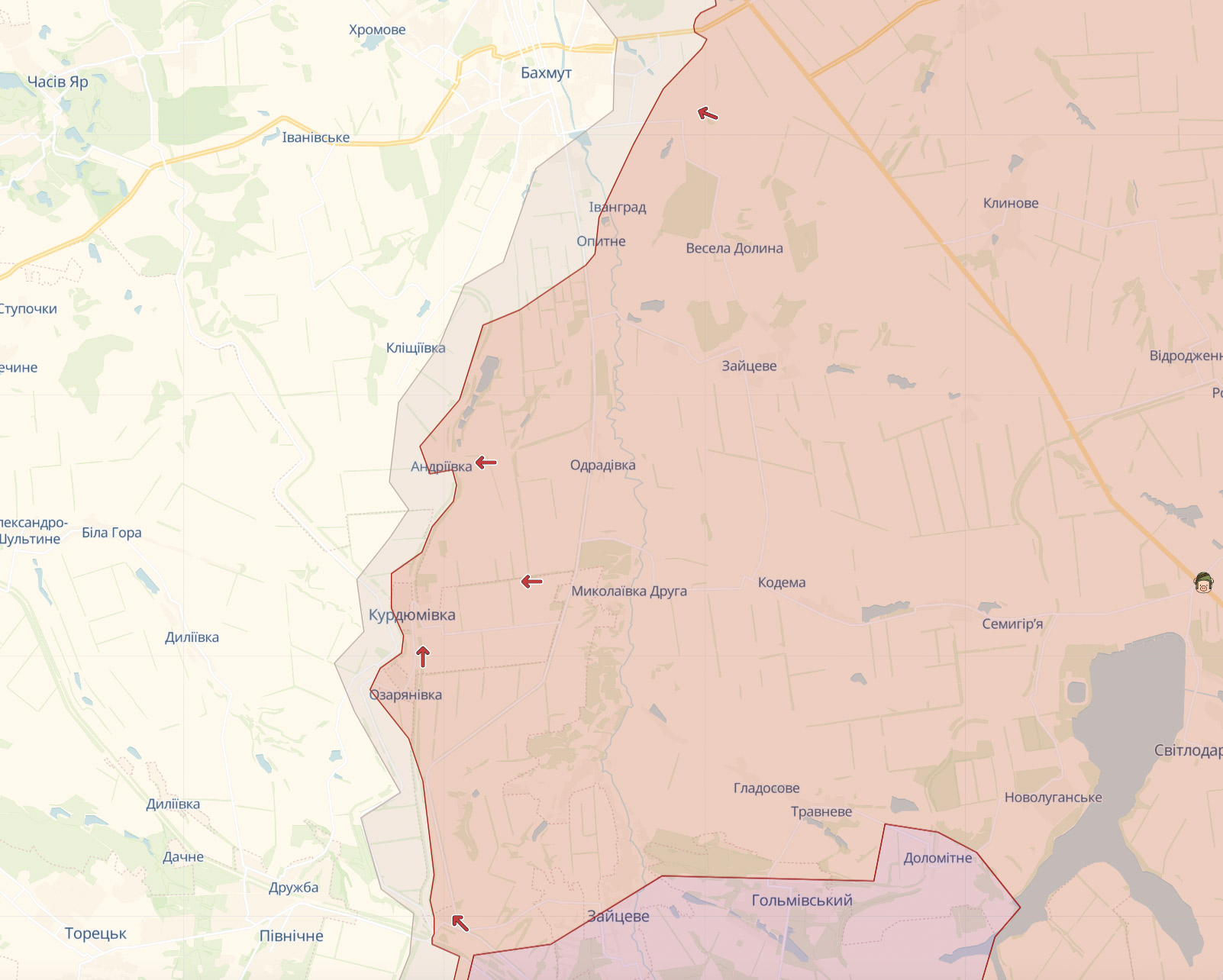
"In truth, we will regain villages. But people, we can't get people back...", adds Kuzyk.
The first difficulty in defending the villages south of Bakhmut is that the Russians still have the advantage in artillery, ammunition and personnel. The second reason is that some units of the Ukrainian Armed Forces are retreating from their positions, therefore exposing the flank.
Russian soldiers are trying to achieve small gains near Bakhmut, moving through small settlements. Their goal is to reach the Bakhmut-Kostiantynivka road (T0504) to Chasiv Yar.
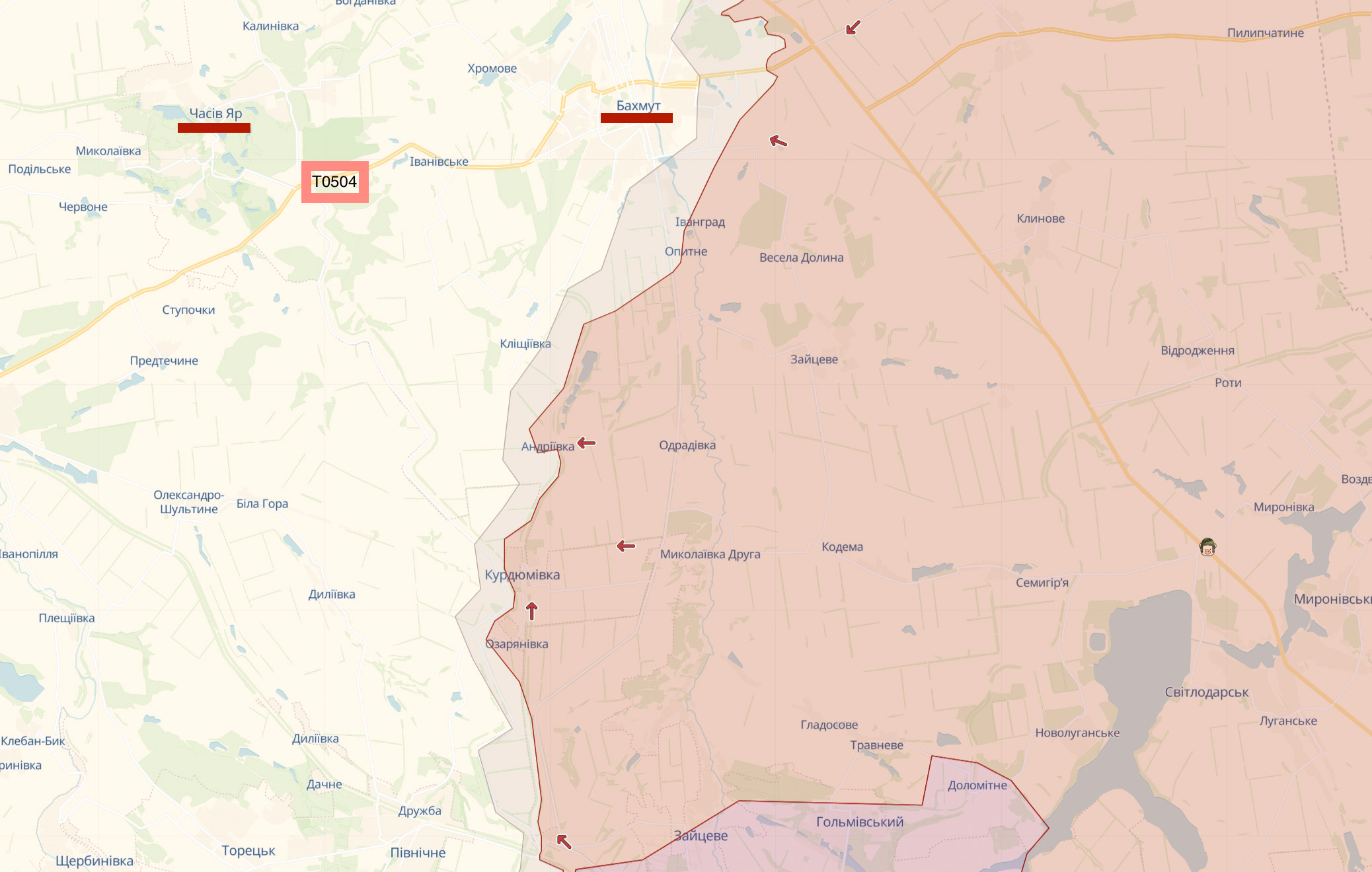
Why Russians are dying for Bakhmut "The story of Bakhmut is purely the story of the Wagner Private Military Company, which decided to prove to the Russian authorities that it has better training than the regular Russian army.
Supposedly, they [the regular Russian army - ed.] retreated from Kherson, while we are holding out here," explains Khrystyna Kudriava, a servicewoman from the 4th Rapid Response Brigade of the National Guard, who is currently serving on the Bakhmut front.
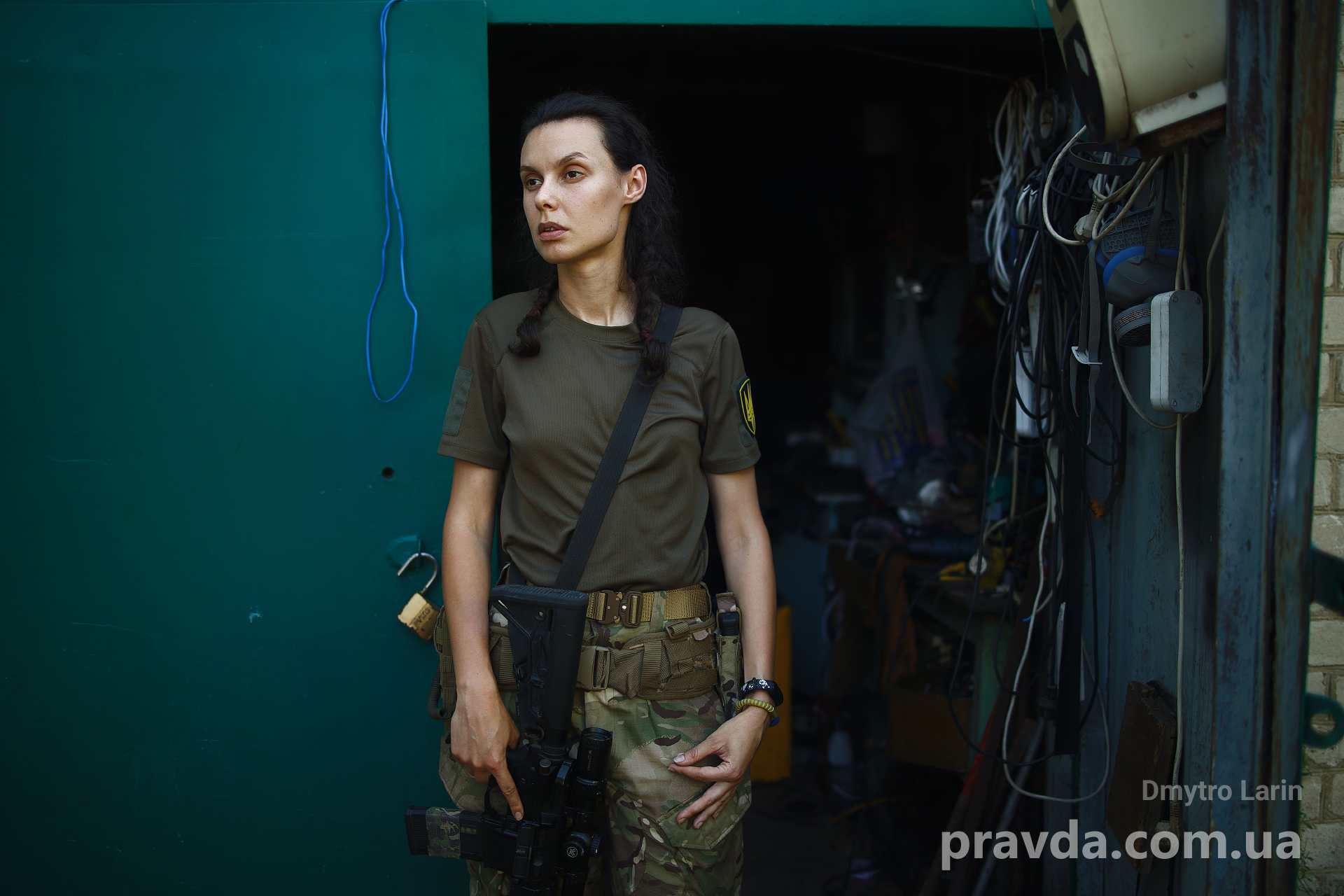 Khrystyna had been deployed to the Bakhmut front after the assault of Lyman together with her unit 3018 of the National Guard of Ukraine.PHOTO BY: DMYTRO LARIN
Khrystyna had been deployed to the Bakhmut front after the assault of Lyman together with her unit 3018 of the National Guard of Ukraine.PHOTO BY: DMYTRO LARIN
Wagnerites, who are stationed on her part of the front, are composed of two groups: the well-trained ones and former convicts. The first ones act as group commanders. They plan operations efficiently and precisely, track the movement of their soldiers well, and encrypt radio communications.
The latter are dumped onto the front after 2-3 weeks of poor training and used as cannon fodder. "A captured Wagnerite told us: you killed 50 people today, 50 more were brought to replace them by the evening. If you killed 100 - they [Russians - ed.] would bring 100 more.
They [Russian command - ed.] try to keep exactly 900 people in the assault unit. They [Wagnerites - ed.] are told: "Manpower is not a problem"," says Petro Kuzyk from Svoboda. "Wagnerites try to get as close to our positions as possible and only then open fire.
I can't say that they are a worthy opponent (because just today we saw how they stole a goat from one backyard), but it is really difficult to deal with them," sums up Khrystyna Kudriava. Apart from being a good PR story for Wagner PMC and the Kremlin in general, the capture of Bakhmut for Russia has a very practical meaning. Its occupation will allow the Russian Federation to deploy about two divisions of its army in the city during the sub-zero temperatures, instead of keeping them in the fields.
Why is the Ukrainian army standing up so staunchly for Bakhmut Neither the General Staff nor the Office of the President are revealing the exact Ukrainian losses in this war and on the Bakhmut front in particular. Nevertheless, through regular communication with the military in this part of the front, it is evident that the defence of Bakhmut comes to the Ukrainian army at a very high price.
Following two weeks of combat, only 7 out of 93 soldiers remained combat-ready in a company of one of the units defending the southern frontiers of the Bakhmut front. Most of them suffered moderate severity shell shock and shrapnel wounds. Why is this city so important?
The first reason is obvious: this city is Ukrainian. The second reason is two important roads that pass through Bakhmut, to the city of Kostiantynivka (T0504) and to the town of Siversk (T0513). The American Institute for the Study of War mentioned these routes in their recent report.
It is possible to use the route to Siversk to turn off to the cities with a pre-war population of over 100,000, Kramatorsk and Sloviansk, which the Russians failed to take full control of in 2014. The third and most important reason is that - as the military explains - the story with Bakhmut is not so much about holding the city itself, but about slowing down the Russian advance and reducing their combat capability. In other words, Ukrainians just have to stand their ground on the Bakhmut front and "grind" through as many Russian forces as possible.
To withstand despite great pain. "As Rubizhne and Severodonetsk [battles] showed, there is still logic in our positional defence. We ground the enemy down there at great cost and reduced their potential.
And later we had the resources to storm them on both the Kharkiv front and the Kherson front," Petro Kuzyk from Freedom Battalion explains. *** Will the Russian army succeed in surrounding Bakhmut?
Currently, such a scenario seems unlikely, although one can expect anything from the Russians, who spare no one and stop at nothing to achieve their own goals. At the beginning of December, the Ukrainian army is restraining the Russian offensive at great cost despite the successes of Russian occupiers on the southern frontiers of the Bakhmut front. The Ukrainian army also controls critical routes that could serve as Russian retreat routes.
Besides, except for the city of Mariupol, Russian forces have never managed to completely encircle Ukrainian forces in the east of Ukraine. The two units mentioned in this story successfully exited Sievierodonetsk under the threat of encirclement and are continuing to defend Ukraine. "Russia is unlikely to exhaust its offensive potential on this front.
And we are unlikely to shift Russian forces here on our own," - one of the people in this story gave this answer to the question "what will happen next" - "Only Russian losses of combat personnel, mining of logistics routes and Western weapons supply can save us."
Olha Kyrylenko, Ukrainska Pravda
Translation: Oxana Hart, Artem Yakymyshyn, Anton Strii
Editing: Susan McDonald